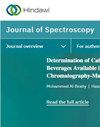Evaluation of the Effectiveness of Multiple Machine Learning Methods in Remote Sensing Quantitative Retrieval of Suspended Matter Concentrations: A Case Study of Nansi Lake in North China
IF 2.1
4区 化学
Q4 BIOCHEMICAL RESEARCH METHODS
引用次数: 4
Abstract
Total suspended matter (TSM) is a core parameter in the quantitative retrieval of ocean color remote sensing and an important indicator for evaluating the quality of the aquatic environment. This study selects part of Nansi Lake in North China as the study area. Researchers used Hyperion remote sensing data and field-measured TSM concentration as data sources. Firstly, the characteristic variables with high correlation were selected based on spectral analysis. Then, seven methods such as linear regression, BP neural network (BP), KNN, random forest (RF), and random forest based on genetic algorithm optimization (GA_RF) are used to construct the inversion model of TSM concentration. The retrieval accuracy of each model shows that the machine learning models are much more accurate than the linear model. Among them, the GA_RF model retrieves the suspended solids concentration with the best performance and the highest prediction accuracy, with a determination coefficient R2 of 0.98, a root mean square error (RMSE) of 1.715 mg/L, and an average relative error (ARE) of 6.83%. Additionally, the spatial distribution of TSM concentration was inversed by Hyperion remote sensing image. The results showed that the concentration of TSM was lower in the northwest and higher in the southeast, and the concentration distribution was uneven, showing the characteristics of a typical shallow macrophytic lake. This study provides an effective method for monitoring TSM concentration and other water quality parameters in the shallow macrophytic lake and further proves the advantages of machine learning in ocean color inversion. All in all, this research provides some useful methods and suggestions for quantitative inversion of TSM concentration in shallow macrophytic lakes.多种机器学习方法在悬浮物浓度遥感定量检索中的有效性评价——以华北南四湖为例
总悬浮物(TSM)是海洋颜色遥感定量检索中的核心参数,也是评价海洋环境质量的重要指标。本研究选取华北南四湖部分区域作为研究区域。研究人员使用Hyperion遥感数据和现场测量的TSM浓度作为数据源。首先,基于谱分析选择相关性较高的特征变量;然后,采用线性回归、BP神经网络(BP)、KNN、随机森林(RF)和基于遗传算法优化的随机森林(GA_RF)等7种方法构建TSM浓度的反演模型。每个模型的检索精度表明,机器学习模型比线性模型要准确得多。其中,GA_RF模型对悬浮物浓度的反演效果最好,预测精度最高,决定系数R2为0.98,均方根误差(RMSE)为1.715 mg/L,平均相对误差(ARE)为6.83%。此外,利用Hyperion遥感影像反演了TSM浓度的空间分布。结果表明:TSM浓度呈西北低东南高的趋势,且浓度分布不均匀,呈现出典型的浅层大型植物湖特征;本研究为监测浅层大型植物湖TSM浓度等水质参数提供了一种有效的方法,进一步证明了机器学习在海洋颜色反演中的优势。总之,本研究为浅植湖TSM浓度的定量反演提供了一些有用的方法和建议。
本文章由计算机程序翻译,如有差异,请以英文原文为准。
求助全文
约1分钟内获得全文
求助全文
来源期刊

Journal of Spectroscopy
BIOCHEMICAL RESEARCH METHODS-SPECTROSCOPY
CiteScore
3.00
自引率
0.00%
发文量
37
审稿时长
15 weeks
期刊介绍:
Journal of Spectroscopy (formerly titled Spectroscopy: An International Journal) is a peer-reviewed, open access journal that publishes original research articles as well as review articles in all areas of spectroscopy.
 求助内容:
求助内容: 应助结果提醒方式:
应助结果提醒方式:


